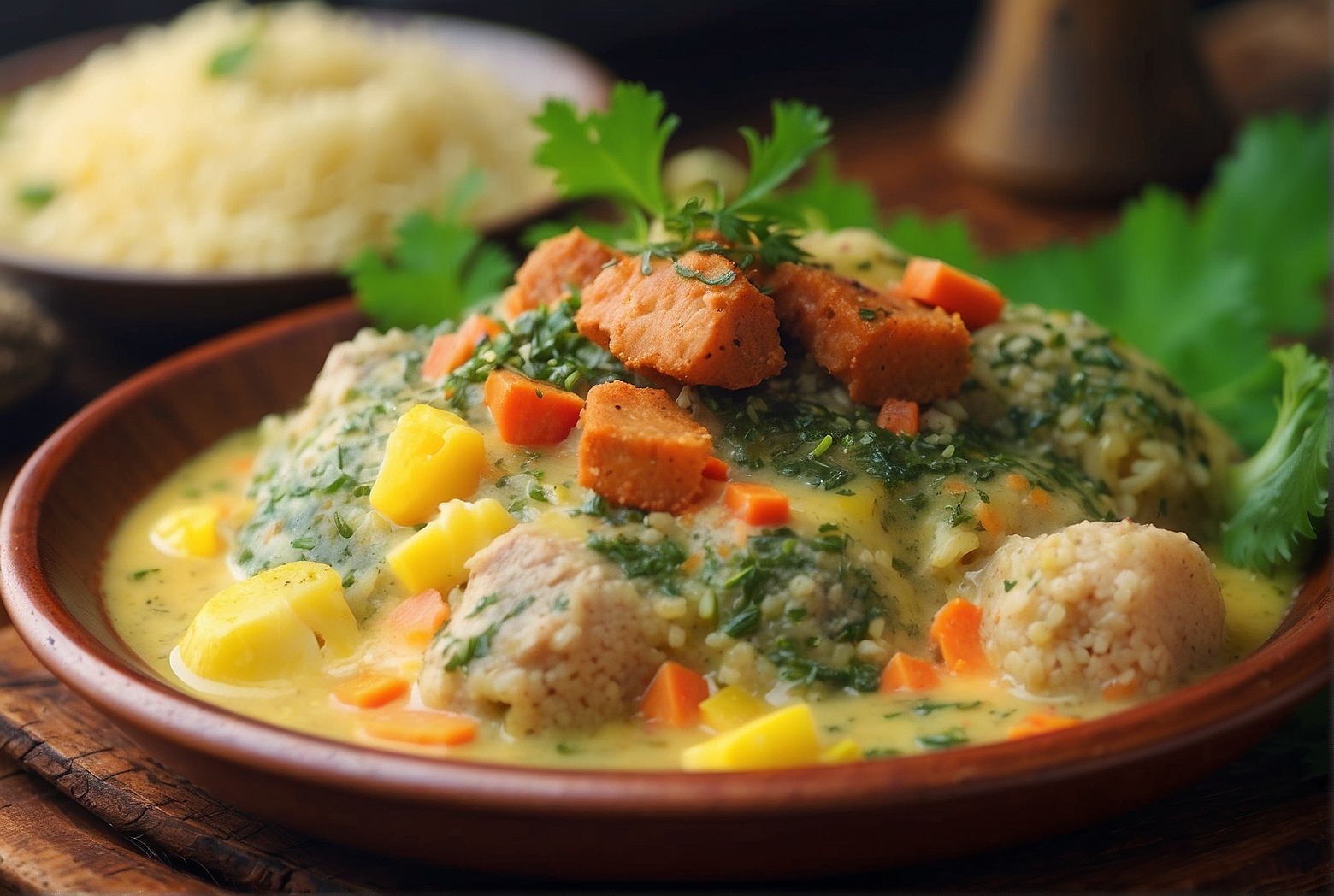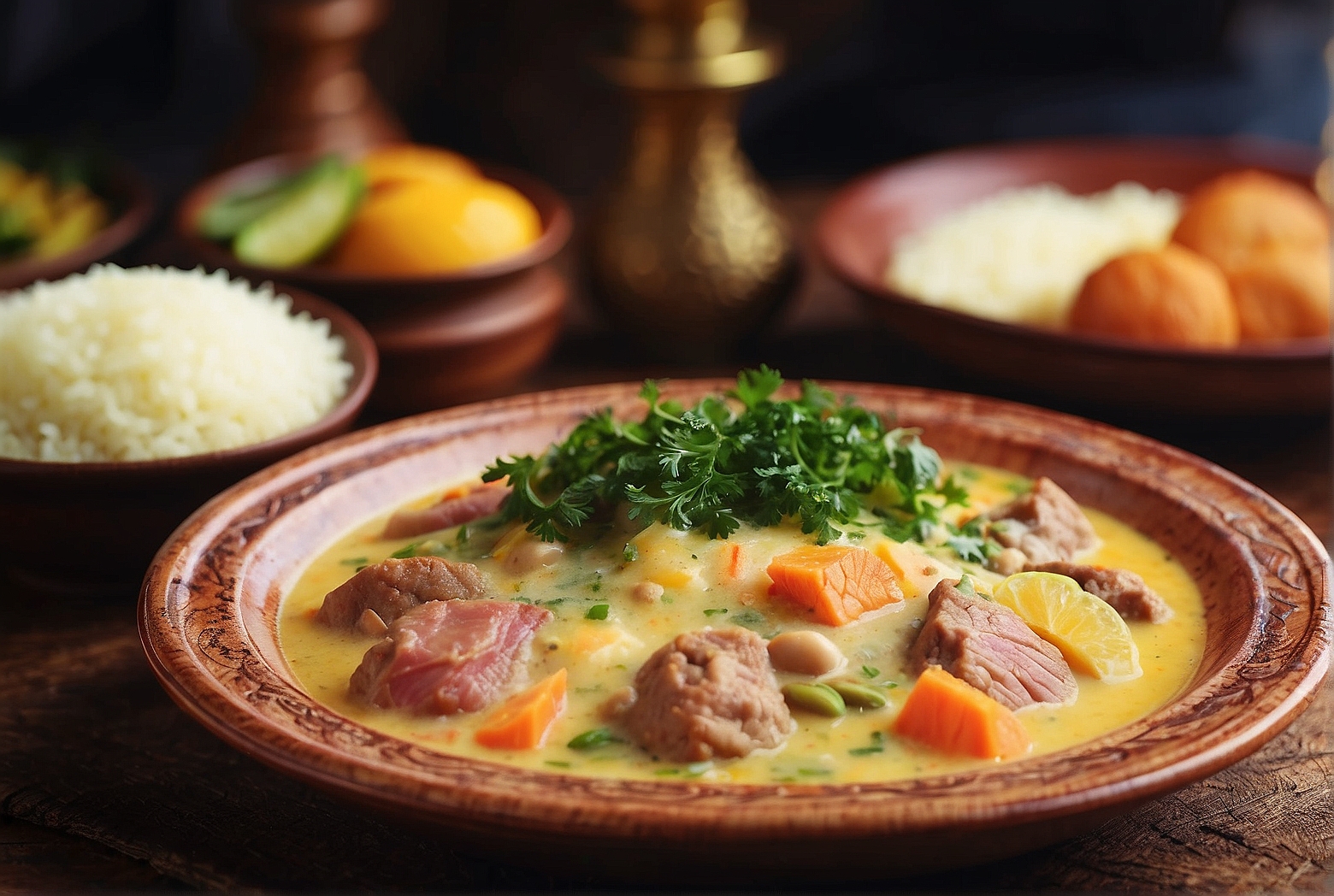Have you ever wanted to explore the flavors of Brazilian cuisine? Well, look no further! In this article, we’ll be exploring the traditional Brazilian dish known as Canjica. This delicious and hearty treat is a staple in Brazilian households, especially during festivals and celebrations. Whether you’re a food enthusiast or simply curious about new flavors, this guide will provide you with all the context you need to appreciate the wonders of Canjica. So, grab a seat, ready your taste buds, and let’s embark on a flavorful journey through the world of Brazilian cooking!
Introduction
Overview of Canjica
Canjica is a traditional Brazilian dish that has deep roots in the country’s culinary heritage. This sweet and creamy delicacy is made from corn and is often enjoyed as a dessert or a comforting treat during festivals and special occasions. With its rich and indulgent flavor, Canjica has become a beloved dish that holds cultural significance in Brazil. In this article, we will delve into the origins of Canjica, explore its ingredients and preparation methods, and discover the various ways it can be enjoyed. So, get ready to embark on a delightful journey into the world of Canjica!
Origins of Canjica
Historical background
Canjica’s history can be traced back to the times of colonization in Brazil. It is believed to have originated from the culinary traditions of African slaves, who introduced their own flavors and cooking techniques to the local cuisine. The dish was originally made with white corn, which was a staple crop in the African continent. Over the years, Canjica gained popularity among different social classes, becoming a symbol of unity and cultural exchange.
Regional variations
Just like many traditional dishes, Canjica has evolved differently across different regions of Brazil. In the northeastern states, it is known as Mungunzá, while in the southern and southeastern states, it is commonly referred to as Canjica. Regional variations include the addition of spices like cinnamon and cloves, as well as the use of different types of corn, such as yellow or white. These variations give Canjica a diverse range of flavors and enhance its cultural significance within each region.
Ingredients
Main ingredients
The main ingredient in Canjica is corn. Traditionally, it is made with dried whole kernel white corn, known as “canjica” in Brazil. Other essential ingredients include milk, sugar, and coconut milk. These ingredients come together to create a luscious and creamy base for the dish, offering a delightful texture and taste.
Optional ingredients
While the main ingredients form the foundation of Canjica, there are several optional ingredients that can be added to enhance the flavor and add variety to the dish. Some popular additions include cinnamon sticks, cloves, vanilla extract, grated coconut, and sweetened condensed milk. These optional ingredients allow for creative experimentation and customization, making Canjica a versatile dish that can be enjoyed in different ways.

Preparation
Soaking the corn
The first step in preparing Canjica is to soak the corn. This helps soften the kernels and allows for easier cooking. The dried corn kernels should be soaked overnight in water, ensuring that they are fully submerged. This process hydrates the grains and reduces their cooking time, resulting in a tender and creamy texture once cooked.
Cooking the corn
After soaking, the corn needs to be cooked until it reaches a soft and creamy consistency. The soaked corn is transferred to a large pot with fresh water and brought to a boil. It is then simmered on low heat until the corn is fully cooked and the kernels have softened. This process may take around 1-2 hours, depending on the type of corn used. Occasional stirring is necessary to prevent the corn from sticking to the bottom of the pot.
Making the Canjica base
Once the corn is cooked, the next step is to create the Canjica base. A portion of the cooked corn is blended together with milk and sugar to create a smooth and creamy mixture. This base is then returned to the pot and simmered again to allow the flavors to meld and thicken the consistency. The addition of coconut milk adds a delicious tropical twist and contributes to the rich and creamy texture of Canjica.
Traditional Canjica Recipe
Step-by-step instructions
- Soak dried whole kernel white corn overnight in water.
- Drain the soaked corn and transfer it to a large pot.
- Add fresh water to the pot, ensuring that the corn is fully submerged.
- Bring the water to a boil, then reduce the heat and simmer until the corn is fully cooked and tender.
- In a blender, combine a portion of cooked corn, milk, and sugar.
- Blend until smooth to create the Canjica base.
- Return the Canjica base to the pot and simmer, stirring occasionally, until the mixture thickens.
- Add coconut milk to the pot and continue simmering until the desired consistency is achieved.
- Serve hot or chilled, garnished with your choice of toppings.
Variations and Additions
Sweet Canjica (Canjica Doce)
The traditional Canjica recipe is inherently sweet, but there are variations that take the sweetness to another level. Sweet Canjica, also known as Canjica Doce, involves increasing the amount of sugar or adding sweetened condensed milk to the Canjica base. This creates a delectably sweet and indulgent dessert that is sure to satisfy any sweet tooth.
Savory Canjica (Canjica Salgada)
For those who prefer savory flavors, Savory Canjica, or Canjica Salgada, offers a unique twist on the traditional recipe. This variation involves omitting the sugar and replacing it with savory ingredients such as bacon, sausage, onions, and garlic. Savory Canjica provides a savory and hearty alternative that can be enjoyed as a main course or a side dish.
Canjica with Toppings
Canjica can be further elevated by adding a variety of toppings. Some popular choices include cinnamon powder, grated coconut, crushed peanuts, or a drizzle of sweetened condensed milk. These toppings not only enhance the visual appeal of the dish but also add different layers of texture and flavor. Feel free to experiment and explore different combinations to find your favorite Canjica creation.

Serving and Presentation
Garnishing options
When it comes to garnishing Canjica, the possibilities are endless. Some common garnishing options include sprinkling cinnamon powder or grated coconut on top of the dish. These simple additions not only add an aesthetically pleasing touch but also enhance the overall flavor profile of Canjica. Experiment with different garnishes to create a visually stunning and delicious presentation.
Serving suggestions
Canjica is a versatile dish that can be enjoyed in various ways. It is traditionally served hot or chilled, depending on personal preference. As a dessert, Canjica can be served in individual bowls or dessert cups, topped with garnishes. It can also be served as part of a larger meal, accompanying savory dishes like roasted meats or grilled vegetables. Regardless of how it is served, Canjica is best enjoyed with friends and family, celebrating the warmth of Brazilian culture.
Canjica Festivals
Popular festivals and events featuring Canjica
Canjica holds a special place in the hearts of Brazilians, and its importance is highlighted during festivals and events where it takes center stage. One such festival is the Festa Junina, a traditional Brazilian celebration held in June. During this event, Canjica is a staple dish, served abundantly along with other traditional foods. The aroma of Canjica fills the air, and people gather to enjoy this beloved treat while partaking in music, dance, and vibrant festivities.
Cultural Significance
Canjica in Brazilian culture
Canjica has become an integral part of Brazilian culture, representing the country’s history, diversity, and culinary traditions. It symbolizes the fusion of African and Brazilian cuisine, showcasing the influence of different cultures on the nation’s food heritage. Canjica is often enjoyed during social gatherings and religious festivities, bringing people together and fostering a sense of community.
Traditions and celebrations
Canjica is deeply intertwined with traditions and celebrations in Brazil. It is commonly served during religious ceremonies such as Catholic feasts dedicated to saints. Canjica holds a symbolic meaning of abundance and prosperity, and it is believed to bring good luck to those who indulge in it. The act of preparing and sharing Canjica has become a cherished tradition, passed down through generations and strengthening family bonds.
Health Benefits
Nutritional value of Canjica
Canjica offers not only delightful flavors but also some nutritional benefits. The corn used in Canjica is a good source of fiber, vitamins, and minerals. It provides essential nutrients like folic acid, vitamin B6, and potassium. Additionally, the coconut milk used in Canjica adds healthy fats and provides a creamy texture without the need for dairy products, making it suitable for those with lactose intolerance or dietary restrictions.
Potential health benefits
The consumption of Canjica may offer potential health benefits. The fiber content in corn can aid in digestion and promote a healthy gut. It may also help regulate blood sugar levels and contribute to cardiovascular health. The coconut milk used in Canjica contains medium-chain triglycerides (MCTs), which are known for their potential to boost metabolism and provide sustained energy. However, it is important to note that Canjica should be enjoyed in moderation as part of a balanced diet.
In conclusion, Canjica is a cherished Brazilian dish that has won the hearts of people across the country and beyond. Its rich history, diverse regional variations, and versatility make it a culinary delight that showcases Brazil’s cultural heritage. Whether enjoyed as a sweet dessert or a savory main course, Canjica brings people together with its comforting flavors and warm traditions. So, next time you’re looking to immerse yourself in Brazilian cuisine, give Canjica a try and savor the delicious taste of tradition.
